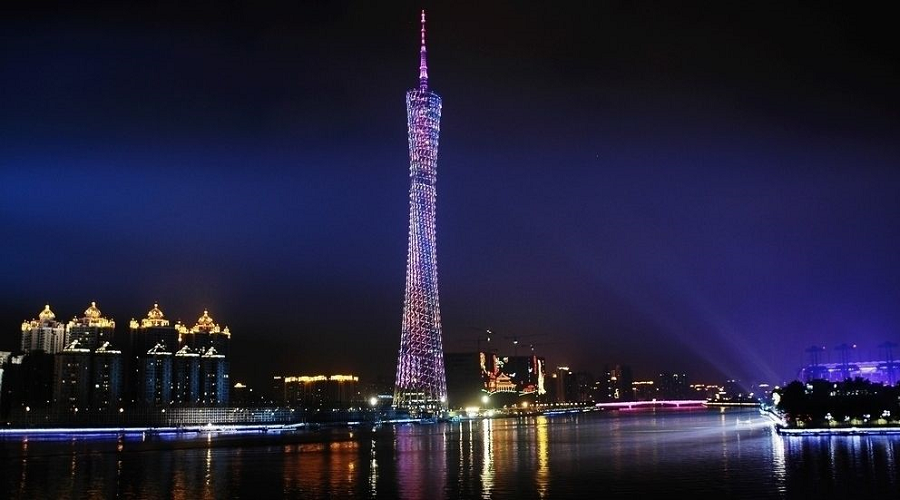Henry K C HO: How to Overcome Public Apathy towards Greater Bay Area?

TIAN Feilong: The Three Strategic Pivots Constituting a “New Hong Kong”

Henry Ho : Rational and science-based policy against Coronavirus needed.

Imagine your foreign friend is travelling to the Mainland and drops by Hong Kong for shopping. When he learned that theHong Kong-Zhuhai-Macau Bridge and The Guangzhou Shenzhen Hong Kong Express Rail Link (XRL) in Hong Kong has been operating and that Hong Kong and the Mainland had six border control facilities from west to east, including Shenzhen Bay,Lok Ma Chau, Lo Wu, Man Kam To, Sha Tau Kok and the newly built Liantang, he naturally asked: what percentage of HongKong people work and live at the other side of the border? He was shocked to know that your answer was “very few.”
Look at all the world’s metropolises, such as New York, Tokyo, London, and Beijing, it is normal for each of them to expand outward in the process of development: London Underground has expanded from Zone 1 to Zone 6, and the BeijingHighway has been built from the third ring road in the 1990s to the sixth ring road. Of course, the shortcomings and sideeffects of over expansion of metropolis are severe, but at least the boundaries of these cities will not be limited to 1,100square kilometers, nor the vision of its people.
Therefore, the fact that Hong Kong’s development was based on an area of only 1,100 square kilometres is indeed a historical exception, or a special case throughout history. Twenty years after the reunification to China, the Greater Bay Area(GBA) concept is urging Hong Kong to “rediscover” its hinterland and possibly a typical development trajectory of ametropolis. It also urges the whole of Hong Kong (including the Government and its people) to stretch its limits of imagination: can we abandon the “default” idea of Hong Kong’s boundary for more than a hundred years, with north of Lo Wuas “the other side” or “adjacent area”? Can we try to think about Hong Kong’s problems and their solutions from the perspective of the GBA?
Of course the idea of “looking at Hong Kong from Hong Kong” has its profound historical reasons and reflects thedifferences between the Mainland and Hong Kong in terms of culture, values and way of doing things. Unfortunately thesedifferences have not been significantly reduced by the implementation
of “One Country, Two Systems” and the closer level of economic development of both sides. The concept of the GBA has been heatly discussed recently. In order to get the support of Hong Kong people, and to avoid themistakes of “official enthusiasm meets public apathy”, I have the following observations and suggestions.
Many officials and scholars like to compare the GBA directly with the Greater Tokyo Bay Area and the SanFrancisco Bay Area, in terms of population, GDP, as well as industrial structure, and reach the conclusion that there is enormous potential of GBA in China. Bay Area itself is just a geographical concept; in theory, therecan be countless “Bay Areas” along the Chinese coast. The biggest challenges and opportunities in the GBA are theimplementation of “One Country, Two Systems.” Our biggest challenge in GBA is the lack of free flow of factors ofproduction including talents, capital, information, and goods. This will constrain the level of integration of HongKong, Macao, and the other nine cities in the Mainland.
Since Hong Kong and Macao are much smaller than Guangdong province, Hong Kong and Macao should becareful in dealing with capacity issues. While free flow of factors of production should be encouraged, it could notbe completely reciprocal (such as the number of tourists and cross-border vehicles from both sides cannot be equated). It would be a challenge for all parties to handle with the sentiment of the people of both sides and avoidthe perception that the GBA results in “Hong Kong and Macao benefit more than Guangdong” .
Hong Kong’s development is facing many bottlenecks, including land shortage, high housing prices,aging population, single industrial structure, and high income disparity etc.. While some may argue that the causes of these problems may be related to Mainland China, but it is evident that the solutions to most of theseissues are closely related to the Mainland. The relatively cheap land costs, a large market, and a friendly environment for innovation and entrepreneurship in the Mainland can provide good opportunities for young people in Hong Kong.
However, I also disagree with some viewpoints such as “there is no future for young people who do not workin the Mainland or the GBA.” There are historical reasons for most young people to confine their horizons to HongKong, and we do not need to ask all young people to develop in the Mainland. In any part of the world, it is the normthat only a small number of people are willing to leave their hometown for career development, and what we propose is to provide more room for development and reduce unnecessary obstacles and unequal treatment to those Hong Kong people who are willing to develop in the Mainland. My think tank “One Country Two SystemsYouth Forum” released Hong Kong’s first Research on Issues of Studying and Working of Hong Kong People in theMainland in 2017, and put forward ten policy recommendations. In short, we should not. over-emphasize Hong Kong’s weakness and push young people to develop into the Mainland. They should make their owndecisions based on objective information.
Compared with the nine provinces of the Pan Pearl River Delta in the past, the nine Mainland cities of the GBA are closer toHong Kong people. Most of the parents or grandparents of Hong Kong people came from the Pearl River Delta, that is, theGBA. At present, Hong Kong people willing to come to GBA are concentrated in the business sector, the grassroots, and theelderly. The former actively conducts business in the Area, while the latter two enjoy inexpensive way of living, tourism oreven settle or retire in GBA.
By contrast, Hong Kong’s middle-class, intellectuals and young people feel alienated from the GBA. They are keen to travelto Japan or Thailand during long weekends, rather than to the neighbouring Greater Bay Area. It can be said that while the”physical distance” of Tokyo and Bangkok are far, the “psychological distance” is close to our young people. On the otherhand the “psychological distance” with the GBA is much farther than the “physical distance”. How to close the gap betweenthese two types of distances is a huge challenge.
The most significant difference between the development of the GBA and the preferential policy of Hong Kong in the past, such as CEPA (The Mainland and Hong Kong Closer Economic Partnership Arrangement), is that it enables Hong Kong residents to live and work there. Therefore, both the government, the business sector, and the think tanks should talk less andwork more to study how to remove all kinds of obstacles and provide a broader space for the development of Hong Kong people.Only in this way can we avoid repeating the mistake of “official enthusiasm meets public apathy” so that the people of HongKong are more willing to embrace the opportunities brought about by the GBA and reconnect with it.
From Henry Ho & Gordon Lam (ed.) A Debate of Two Systems, p.84
Original from: Forum page, Ming Pao.




